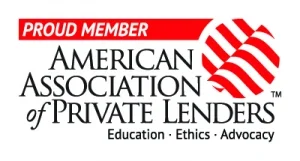Subsidized housing is a government-supported program designed to assist low-income individuals and families in securing affordable housing. This article explains what subsidized housing is, how it works, the different types available, and the eligibility criteria.
Definition of Subsidized Housing
Subsidized housing refers to housing units that receive financial assistance from the government or other organizations to reduce the cost for residents. This assistance helps make rent more affordable for low-income households.
How Subsidized Housing Works
Subsidized housing programs work by providing financial assistance to cover a portion of the rent. The government or a non-profit organization typically pays this subsidy directly to the landlord, reducing the amount that the tenant is responsible for.
Types of Subsidized Housing
There are several types of subsidized housing programs, each with its own rules and eligibility requirements:
Public Housing
Public housing is owned and operated by local housing authorities. It provides affordable rental housing for low-income families, the elderly, and persons with disabilities.
Section 8 Housing Choice Vouchers
The Section 8 program provides vouchers that eligible families can use to rent housing in the private market. Tenants pay a portion of the rent based on their income, and the voucher covers the rest.
Project-Based Section 8
In this program, the subsidy is tied to specific housing units rather than vouchers. Tenants pay a portion of the rent, and the government pays the remainder directly to the landlord.
Low-Income Housing Tax Credit (LIHTC) Properties
LIHTC properties are privately owned but receive tax credits to offer affordable rents to low-income tenants. The rents are typically below market rates.
Eligibility Criteria for Subsidized Housing
Eligibility for subsidized housing varies by program but generally includes the following criteria:
- Income Limits: Applicants must have an income below a certain threshold, typically based on the area’s median income.
- Household Size: The size of the household affects eligibility and the amount of assistance.
- Citizenship Status: Applicants must be U.S. citizens or eligible non-citizens.
- Background Checks: Some programs may conduct background checks to assess rental history and criminal records.
Benefits of Subsidized Housing
Subsidized housing provides numerous benefits to low-income families and individuals:
- Affordable Rent: Reduces the financial burden of housing costs.
- Stability: Provides stable housing, which can improve overall quality of life.
- Access to Services: Many subsidized housing programs offer access to supportive services, such as job training and childcare.
Challenges of Subsidized Housing
Despite its benefits, subsidized housing also faces several challenges:
- Limited Availability: High demand and limited funding can result in long waiting lists.
- Stigma: There can be a stigma associated with living in subsidized housing.
- Maintenance Issues: Some subsidized housing properties may suffer from poor maintenance and upkeep.
Conclusion
Subsidized housing is a critical resource for low-income families and individuals, providing affordable and stable housing options. Understanding the different types of subsidized housing, eligibility criteria, and the benefits and challenges can help those in need navigate the available programs and secure suitable housing.


